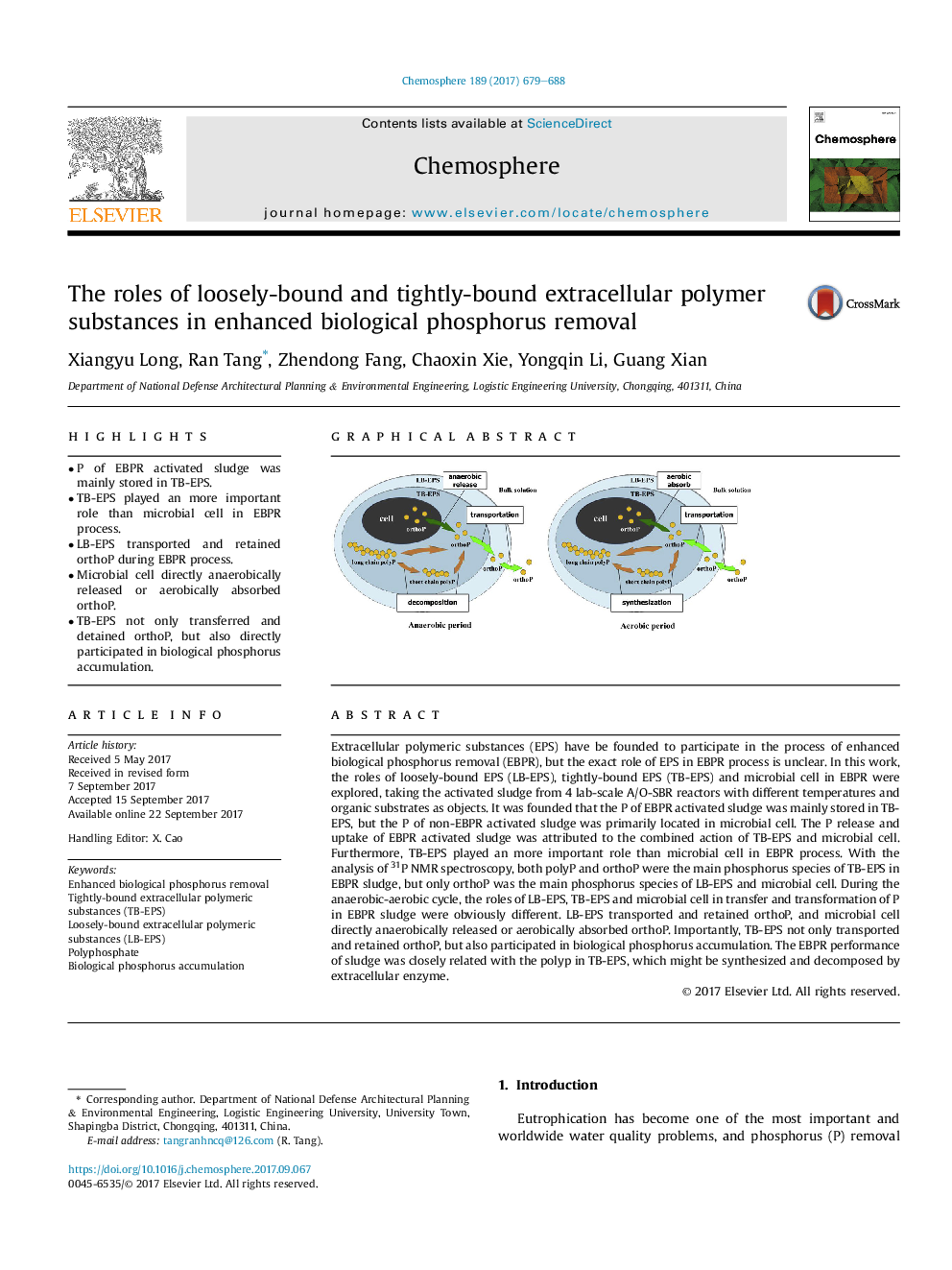| کد مقاله | کد نشریه | سال انتشار | مقاله انگلیسی | نسخه تمام متن |
|---|---|---|---|---|
| 5745873 | 1618782 | 2017 | 10 صفحه PDF | دانلود رایگان |
- P of EBPR activated sludge was mainly stored in TB-EPS.
- TB-EPS played an more important role than microbial cell in EBPR process.
- LB-EPS transported and retained orthoP during EBPR process.
- Microbial cell directly anaerobically released or aerobically absorbed orthoP.
- TB-EPS not only transferred and detained orthoP, but also directly participated in biological phosphorus accumulation.
Extracellular polymeric substances (EPS) have be founded to participate in the process of enhanced biological phosphorus removal (EBPR), but the exact role of EPS in EBPR process is unclear. In this work, the roles of loosely-bound EPS (LB-EPS), tightly-bound EPS (TB-EPS) and microbial cell in EBPR were explored, taking the activated sludge from 4 lab-scale A/O-SBR reactors with different temperatures and organic substrates as objects. It was founded that the P of EBPR activated sludge was mainly stored in TB-EPS, but the P of non-EBPR activated sludge was primarily located in microbial cell. The P release and uptake of EBPR activated sludge was attributed to the combined action of TB-EPS and microbial cell. Furthermore, TB-EPS played an more important role than microbial cell in EBPR process. With the analysis of 31P NMR spectroscopy, both polyP and orthoP were the main phosphorus species of TB-EPS in EBPR sludge, but only orthoP was the main phosphorus species of LB-EPS and microbial cell. During the anaerobic-aerobic cycle, the roles of LB-EPS, TB-EPS and microbial cell in transfer and transformation of P in EBPR sludge were obviously different. LB-EPS transported and retained orthoP, and microbial cell directly anaerobically released or aerobically absorbed orthoP. Importantly, TB-EPS not only transported and retained orthoP, but also participated in biological phosphorus accumulation. The EBPR performance of sludge was closely related with the polyp in TB-EPS, which might be synthesized and decomposed by extracellular enzyme.
340
Journal: Chemosphere - Volume 189, December 2017, Pages 679-688
